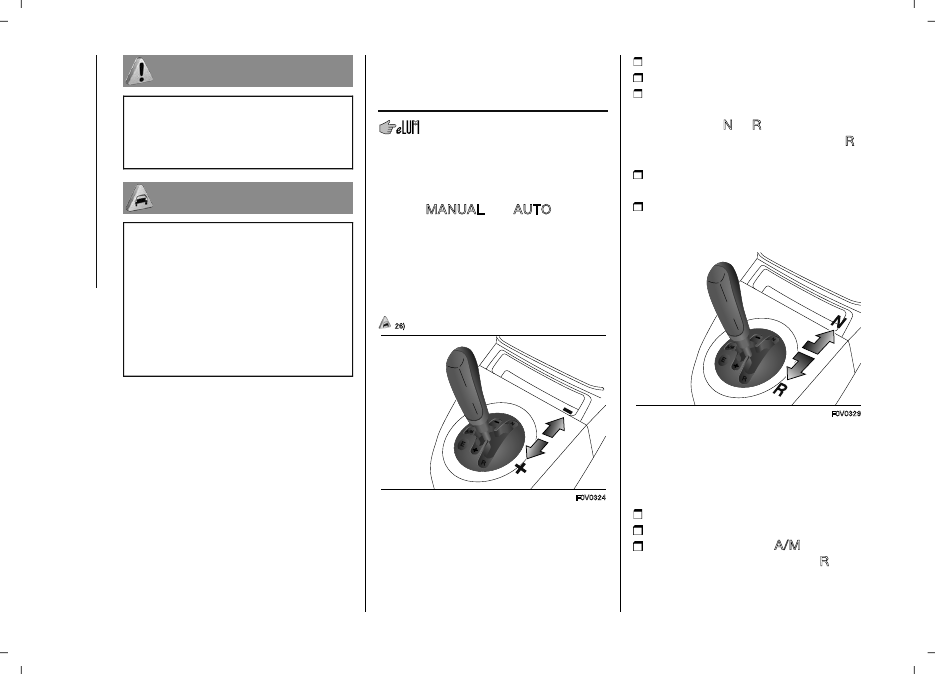Fiat Doblo Panorama (2019 year). Manual - part 7

STARTING AND DRIVING
106
WARNING
95)
Press the clutch pedal fully to shift
gears correctly. It is therefore essential that
there is nothing under the pedals: make
sure the mats are lying flat and do not get
in the way of the pedals.
IMPORTANT
25)
Do not drive with your hand resting
on the gear lever as the force exerted,
even if slight, could lead over time to
premature wear of the gearbox internal
components. The clutch pedal should be
used only for gear changes. Do not drive
with your foot resting on the clutch pedal,
however lightly. For versions/markets
where provided, the electronic clutch
control could cut in by interpreting the
incorrect driving style as a fault.
COMFORT-MATIC/
DUALOGIC
TRANSMISSION
The vehicle is equipped with an
electronically controlled mechanical
transmission (Comfort-Matic or
Dualogic) which has two operating
modes: MANUAL and AUTO.
The transmission consists of a
traditional manual transmission with a
lever fig. 134, to which an electronically
controlled electro-hydraulic device has
been added to automatically control
the clutch and gear the engagement.
26)
134
F0V0324
MANUAL MODE
WARNING For the correct use of the
system only use your right foot to
operate the pedal unit.
Press the brake pedal.
Start the engine.
Push the transmission lever towards
+ fig. 134 to engage the first gear (if it
is coming from N or R, simply place
the lever in the middle position) or in R
fig. 135 to engage reverse gear.
Release the brake pedal and press
the accelerator pedal.
In driving conditions, push gear lever
towards + to shift up or towards – to
shift down.
135
F0V0329
AUTOMATIC MODE
WARNING To use the system correctly,
it is advisable to only use your right foot
to operate the pedals.
Press the brake pedal.
Start the engine.
Push the shift lever to A/M fig. 136
to enable automatic mode or to R
fig. 135 to engage reverse; push the
shift lever towards + (shift up) fig. 134